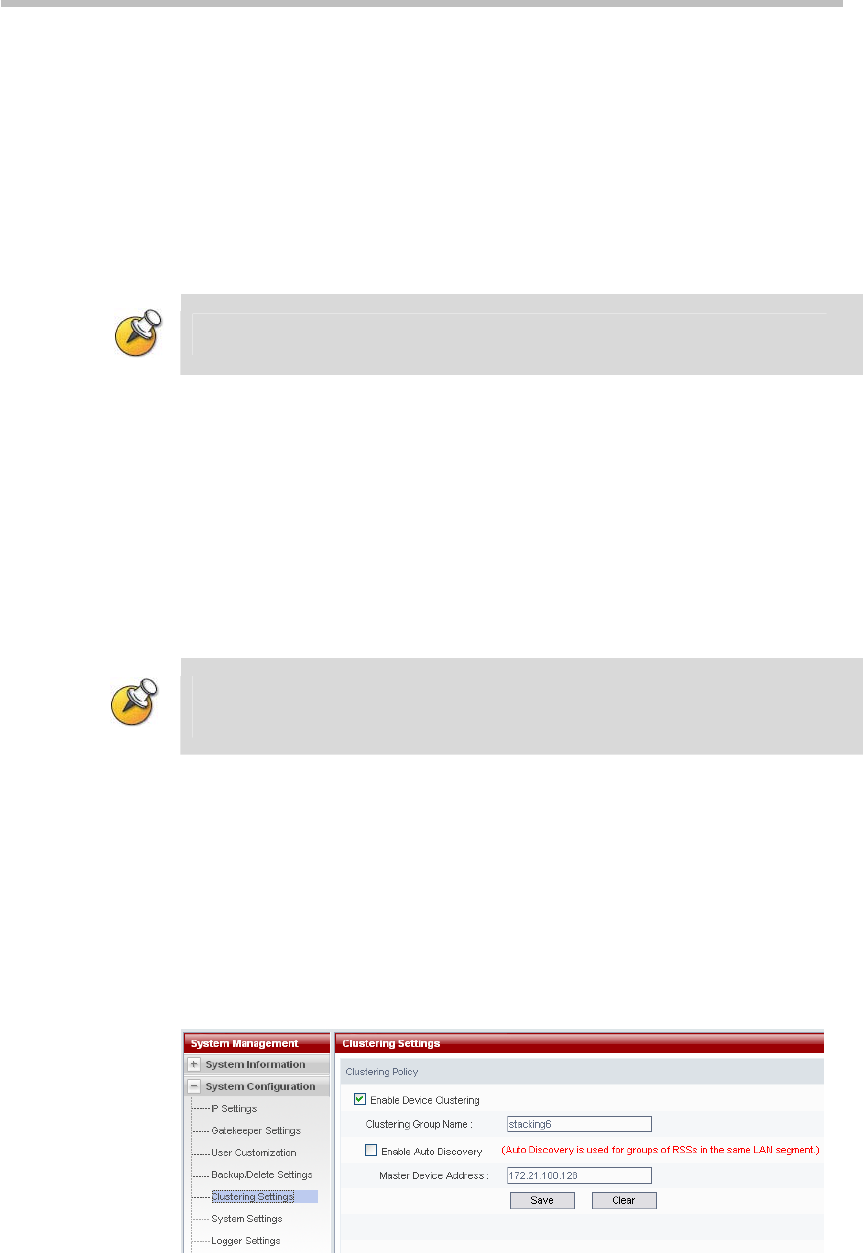
Chapter 2 -
2-16
Web User Interface (UI)
• Backup after end of recording – Video files will be immediately backed
up to the FTP server if this is selected.
• Backup after a specified number of days- Video files will be backed up
to the FTP server at a configured frequency if this option is selected. The
backup time must be set. Specify the number of days after recording, and
the backup start time on that day. The number of days may be any value
in the range of 0-100, and any time may be set from 0:00 to 23:00; the
backup end time must be later than the backup start time.
The file names of archives that have been backed up will be displayed in pink in the
archive list.
Deletion Policies
There are three possible deletion policies that can be selected:
• Never delete – Video files will be stored indefinitely on the RSS 2000's
hard drive when this option has been selected.
• Delete after backup – Video files will be immediately deleted after being
sent to the backup server when this option has been selected.
• Delete after a specified number of days – Sets the number of days after
the end of recording before video file are deleted; the number of days
may be any value in the range of 0-100.
If "Never Auto Delete" is enabled on the video file properties screen (please refer to
Changing Archive Properties section), the video file will not be deleted even if the
backup/delete strategy allows deletion.
Clustering Settings
To facilitate the preview or play of recording files stored on RSS 2000 devices
on the network, the RSS 2000 provides a device clustering function. After
enabling the device clustering function and correctly setting clustering
parameters, users can use an RSS 2000 to play video files stored on other RSS
2000 devices. Click on "System Configuration -> Clustering Settings" in the
navigation bar on the left side of the screen to enter the clustering settings
interface.
Figure 2-21 Clustering settings screen
There are two ways of setting RSS 2000 clustering: automatic clustering and
manual configuration:


















